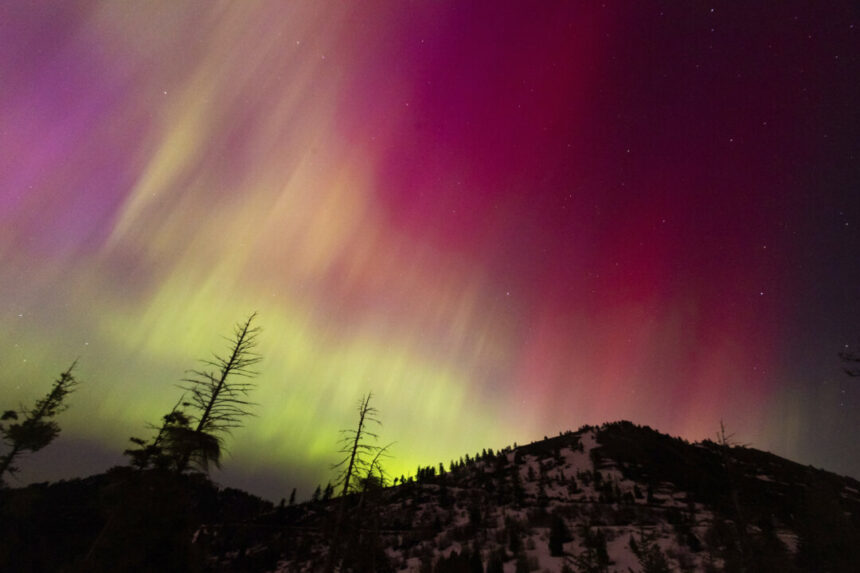The U.S. National Oceanic and Atmospheric Administration (NOAA) has warned that a weaker repeat of Saturday’s powerful solar storm is expected on Sunday. Coronal mass ejections, which are clouds of ejected solar plasma that can disrupt power grids, high-frequency communications, and global positioning systems, are projected to impact the Earth’s magnetic field and outer atmosphere until at least Sunday night.
Although Saturday’s solar storm treated viewers to a stunning display of lights in the sky, it caused only minor disturbances to the electric power grid, communications, and satellite positioning systems. Fortunately, the Federal Emergency Management Agency (FEMA) reported no significant impact from the storms, and the U.S. Department of Energy confirmed that there were no known effects on electric customers.
SpaceX’s Starlink satellite internet service experienced degradation, prompting CEO Elon Musk to assure the public that the satellites were holding up under pressure. The Northern Lights, or Aurora Borealis, were visible in various countries, including Germany, Switzerland, China, England, and Spain, showcasing brilliant purple, green, yellow, and pink hues.
In the United States, the solar storm on Friday extended the reach of the Northern Lights further south than usual. Sightings were confirmed in areas of Florida and other Midwestern states, offering a rare opportunity for many to witness the spectacle. NOAA issued a severe geomagnetic storm warning when the solar outburst reached Earth earlier than expected on Friday.
Despite the potential risks to power grids and satellites, NOAA assured that most people on Earth would not be directly affected. The agency emphasized the beauty of the aurora caused by space weather and recommended capturing the phenomenon with phone cameras for the best viewing experience.
While the solar storm poses a threat to high-voltage transmission lines and satellite systems, NOAA reassured that any disruptions to navigation and communication services on Earth should be minimal and short-lived. The increased solar activity is part of the sun’s natural 11-year cycle peak, with strong solar flares observed since Wednesday.
With ongoing monitoring and precautions in place, experts are hopeful that any potential disruptions can be mitigated effectively. The sun’s activity serves as a reminder of the powerful forces at play in our solar system, offering a unique opportunity for stargazers and scientists alike to witness the wonders of space.
By Tom Krisher, Josh Funk, and Marcia Dunn





